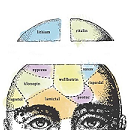Scientific American looks at the state of scientific understanding surrounding the apparent influences of certain common food colorings on hyperactivity in children.
“The literature here is so sparse that on the one hand you can sympathize with those who want to take a wait-and-see attitude,” psychiatrist Joel Nigg tells Scientific American. “But on the other hand, when we do look at the literature we have, it’s surprising that we do see effects that seem to be real. Do you want to take a chance that these initial studies are wrong and put kids at risk or do you want to take a chance that they’re right? We have to work on the data we have.”
Does Artificial Food Coloring Contribute to ADHD in Children? (Scientific American, April 27, 2015)











